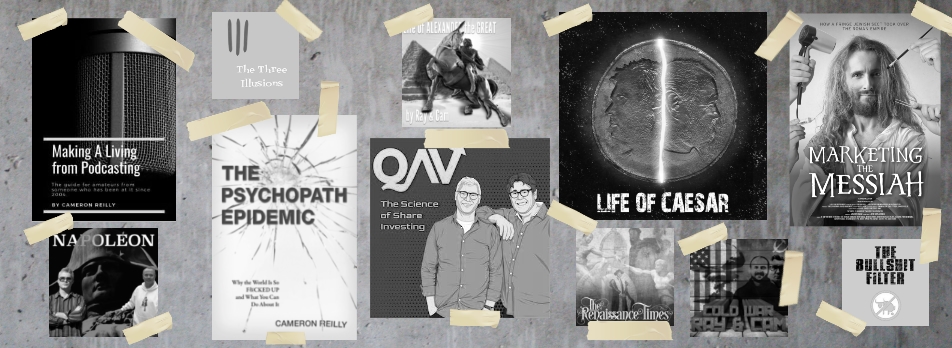by cameron | Nov 23, 2011 | Brisbane, climate change, Iran, media 2.0
According to Neiman Journalism Lab:
“Dan Schultz, a graduate student at the MIT Media Lab (and newly named Knight-Mozilla fellow for 2012), is devoting his thesis to automatic bullshit detection. Schultz is building what he calls truth goggles — not actual magical eyewear, alas, but software that flags suspicious claims in news articles and helps readers determine their truthiness. It’s possible because of a novel arrangement: Schultz struck a deal with fact-checker PolitiFact for access to its private APIs.”
(via Bull beware: Truth goggles sniff out suspicious sentences in news » Nieman Journalism Lab.)
It’s a fascinating idea. Imagine browsers having a plug-in that is able to fact check all sorts of data using sources such as Wikipedia. It could have a huge impact on the future of news media. Imagine reading an article on, say, climate change in The Australian, and this “truth goggles” plug-in pointing out all of the inconsistencies in their reporting.
Or imagine reading Hilary Clinton ramping up the case for invading Iran because they are weaponising uranium, but have “truth goggles” pointing out that there is no evidence to support this claim.
Of course, this process doesn’t *need* to be automated with an algorithm. Chrome extensions like “Glass” allow people to comment on websites. For example, see this screenshot of a comment I left using Glass on a story in the Brisbane Times today about News Ltd corruption allegations from former QLD senator Bill O’Chee.

Could we all use tools like Glass to subvert the ability of the mainstream media and certain blogs to spin bullshit to their readers? Of course there is always the comments section of most sites these days, but perhaps they tend to get moderated and news sites promote comments by their faithful believers. Would Glass-like tools also get corrupted by flame wars? How do we keep them clean and useful? User moderation ala Wikipedia?
by cameron | Nov 14, 2011 | OWS

“… the use of the term ‘income inequality,’ from less than 91 instances in the week before the occupation started to almost 500 instances last week.”
… writes Dylan Byers at Ben Smith’s new and expanded blog via Occupy Wall Street’s big win in one graph – The Washington Post.
Building awareness and discussion. Driving issues up the priority stack in the minds of the people, the media and politicians. It’s what movements like OWS can accomplish. It’s what we can do with tools such as podcasting and Twitter. Keep in mind that OWS was started (in part, at least) by Adbusters magazine (who’s CEO, Kalle Lasn, has appeared on this show in the past just BTW).
by cameron | Oct 16, 2011 | Brisbane, Culture Jamming
It looks like the moderators at Wikipedia aren’t sure whether or not the #Occupy protests are significant enough to allow into its hallowed halls.
I would imagine that if the protests are getting mainstream media coverage (as even the smallish Brisbane protest received yesterday) then it would be significant enough for Wikipedia.
by cameron | Jun 9, 2011 | Podcast
Veteran crime reporter Adam Shand joins me again on the show to talk about the TWO films being made based on his book KING OF THIEVES, as well as about diamond heists, the HELLS ANGELS, police corruption and just how lazy the lamestream media have become.
by cameron | Mar 18, 2011 | energy debate, Podcast, Wikileaks
As I mentioned on episode #22, Rod Adams (@atomicrod) is a self-professed nuclear energy “obsessive” since 1981. He writes at the Atomic Insights blog and has produced the Atomic Show podcast on TPN since 2005. He chatted with me tonight about Fukushima – why the risk to human health is extremely small, how it’s different from Chernobyl, what to do with nuclear waste (see ‘Traveling wave reactor’ below) and his theories on why we’re seeing so much hysteria about it in the mainstream media.
Shownotes:
The nuclear accident underway in Japan does not raise doubts about the safety of nuclear power, and calls to abandon it altogether are just another example of the strange irrationality that surrounds the issue. – Cosmos Magazine
Traveling wave reactor – Wikipedia
IAEA warned Japan over nuclear quake risk: WikiLeaks
Chernobyl health effects
Whatever Happens Next, Lets Think Clearly About Nuclear Risks
Japan worst-case scenario unlikely to cause catastrophic radiation release
BTW, have you seen Stitcher yet? It’s a great iPhone app that STREAMS podcasts – no need to sync with iTunes! Listen to No Illusions on Stitcher here.




